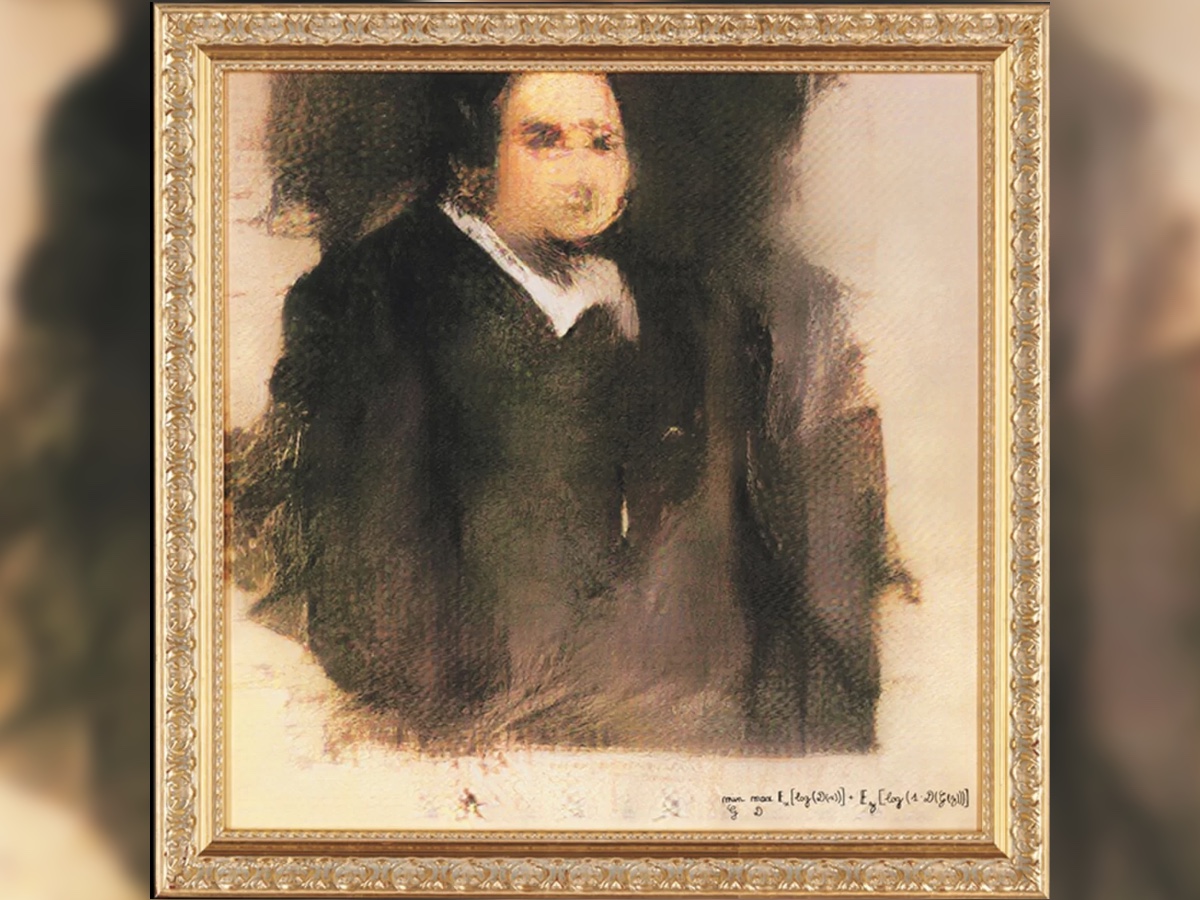Creepy AI-Created Portrait Fetches $432,500 at Auction

A creepy-looking painting of a fictitious man in a dark frockcoat left the auction block at Christie's for a whopping $432,500 today (Oct. 25) in New York City. While that price tag is high — nearly 45 times its upper estimate — that's not what makes the sale so compelling: The artwork was created, not by human, but by computer.
The "Portrait of Edmond Belamy" is the first painting created by an artificial intelligence (AI) to be auctioned in the art world.
The man with a blurry face, painted in the "Old Master" style of artists like Rembrandt van Rijn in the 17th century, is the product of the Paris art collective Obvious. It's part of a set of paintings showing the fictional Belamy family, according to Christie's. [Can Machines Be Creative? Meet 9 AI 'Artists']
The collective, which includes Hugo Caselles-Dupré, Pierre Fautrel and Gauthier Vernier, uses an AI method called generative adversarial network (GAN) for its creations.
The GAN algorithm involves a so-called Generator (that makes the art) and a Discriminator (that tries to spot the difference between human-created and AI-created images).
"We fed the system with a data set of 15,000 portraits painted between the 14th century to the 20th," Caselles-Dupré told Christie's. "The Generator makes a new image based on the set, then the Discriminator tries to spot the difference between a human-made image and one created by the Generator. The aim is to fool the Discriminator into thinking that the new images are real-life portraits. Then we have a result."
The Discriminator, however, is more easily fooled than the human eye, according to Christie's. As such, the portrait of Belamy looks distorted, or as Christie's describes it, sort of like one of Glenn Brown's art-historical appropriations.
Sign up for the Live Science daily newsletter now
Get the world’s most fascinating discoveries delivered straight to your inbox.
Having AI take on a portrait was a bold move to be sure. "It must also surely be the case that portraiture is an extremely tough genre for AI to take on, since humans are highly attuned to the curves and complexities of a face in a way that a machine cannot be," Christie's said.
The collective also did some work with nudes and landscapes using their algorithm. "But we found that portraits provided the best way to illustrate our point, which is that algorithms are able to emulate creativity," Caselles-Dupré told Christie's.
As for "who" is the artist behind the painting, is it the algorithm — which forms the artist signature on the painting itself — or the creators of the algorithm? "If the artist is the one that creates the image, then that would be the machine," Caselles-Dupré said. "If the artist is the one that holds the vision and wants to share the message, then that would be us."
Regardless of artwork authorship, the sale signals "the arrival of AI art on the world auction stage," according to Christie's.
Originally published on Live Science.
Jeanna Bryner is managing editor of Scientific American. Previously she was editor in chief of Live Science and, prior to that, an editor at Scholastic's Science World magazine. Bryner has an English degree from Salisbury University, a master's degree in biogeochemistry and environmental sciences from the University of Maryland and a graduate science journalism degree from New York University. She has worked as a biologist in Florida, where she monitored wetlands and did field surveys for endangered species, including the gorgeous Florida Scrub Jay. She also received an ocean sciences journalism fellowship from the Woods Hole Oceanographic Institution. She is a firm believer that science is for everyone and that just about everything can be viewed through the lens of science.









